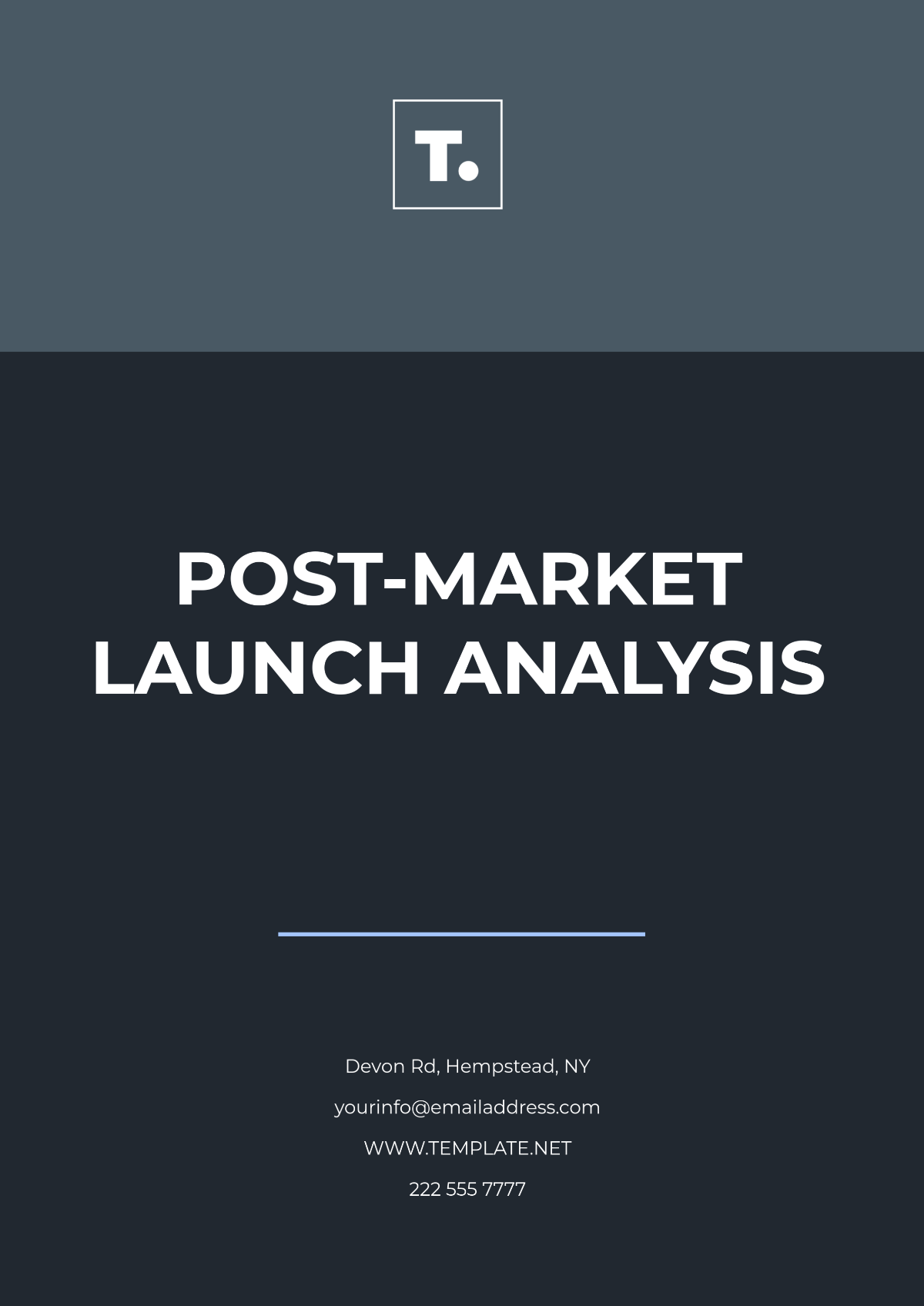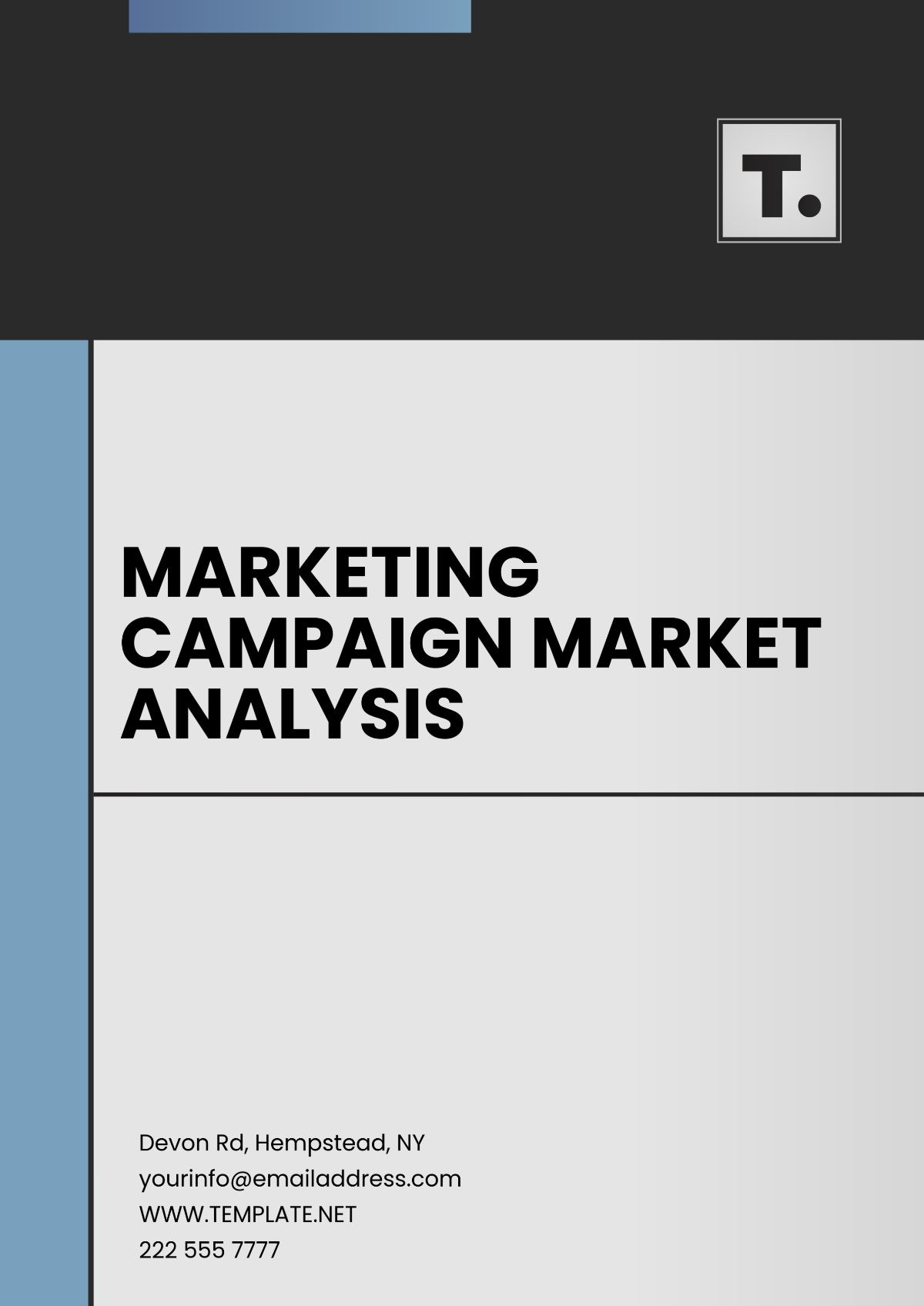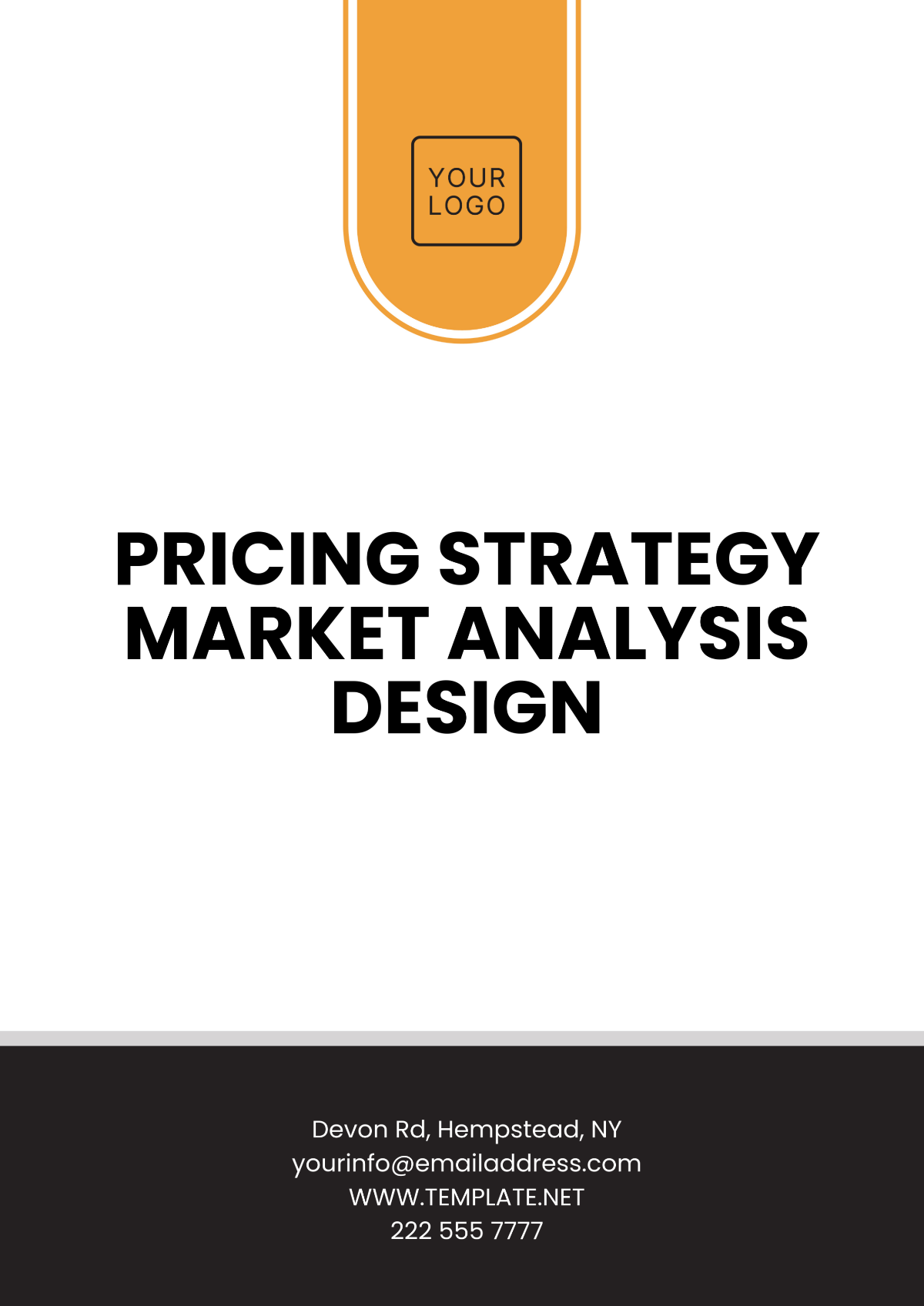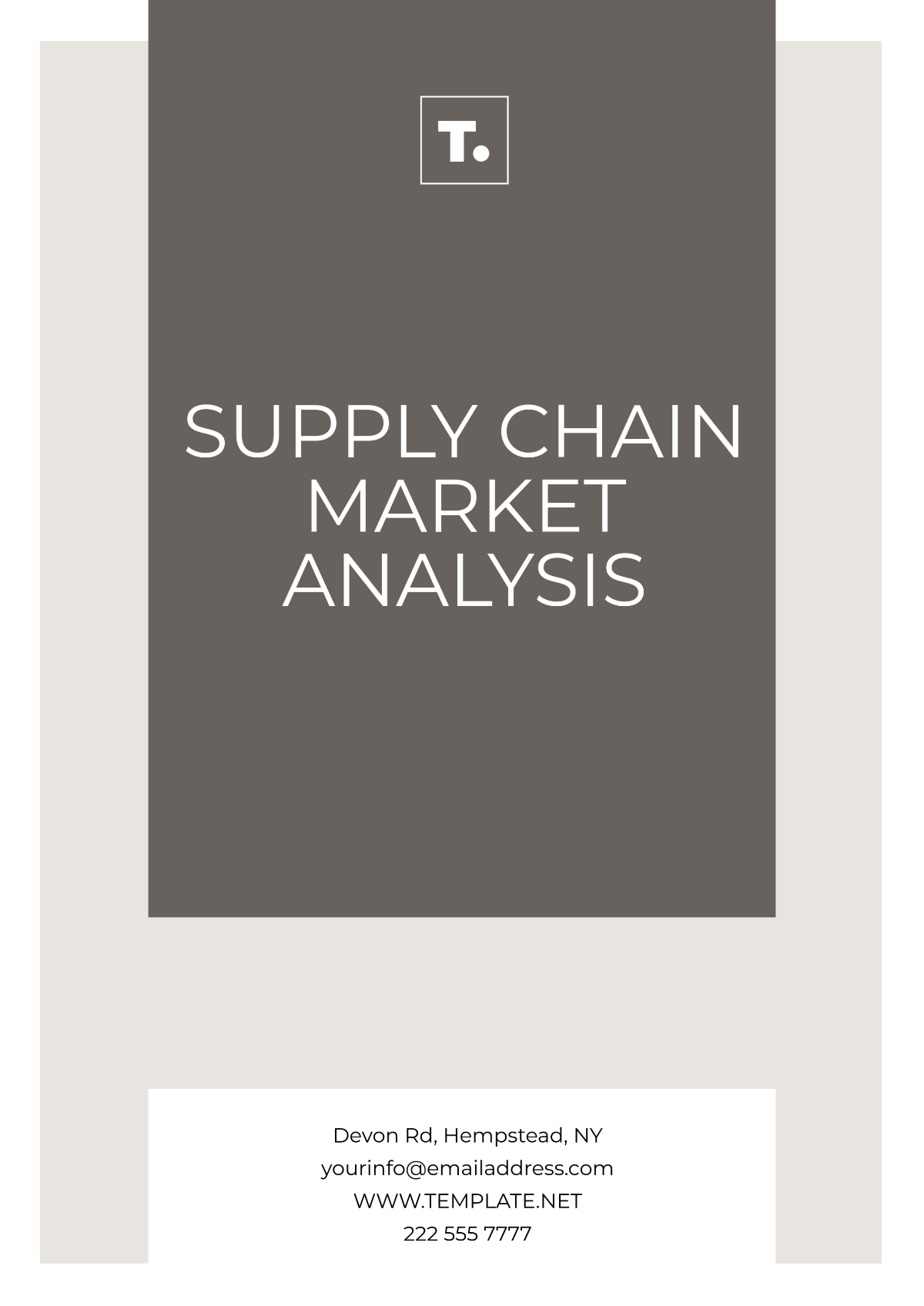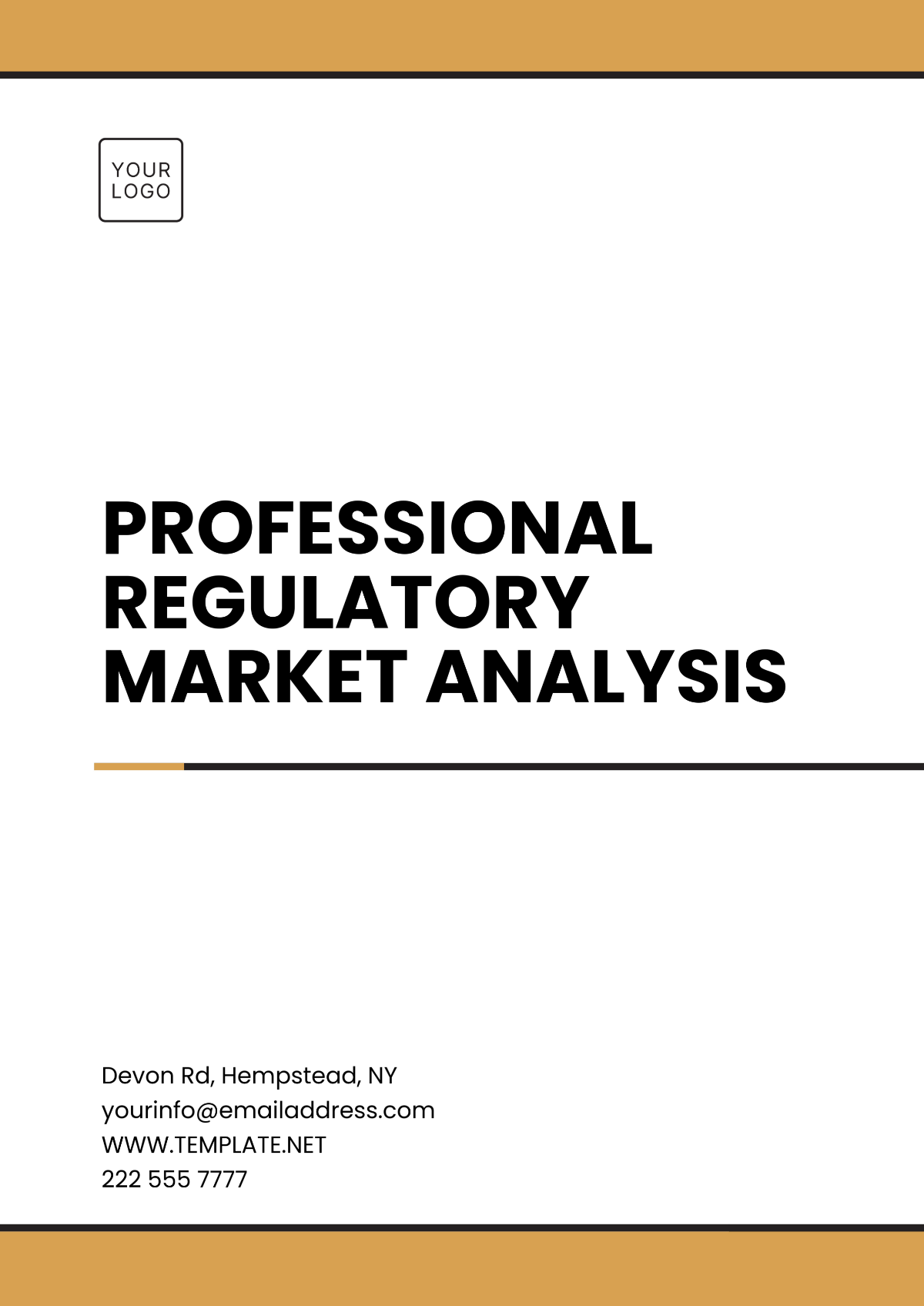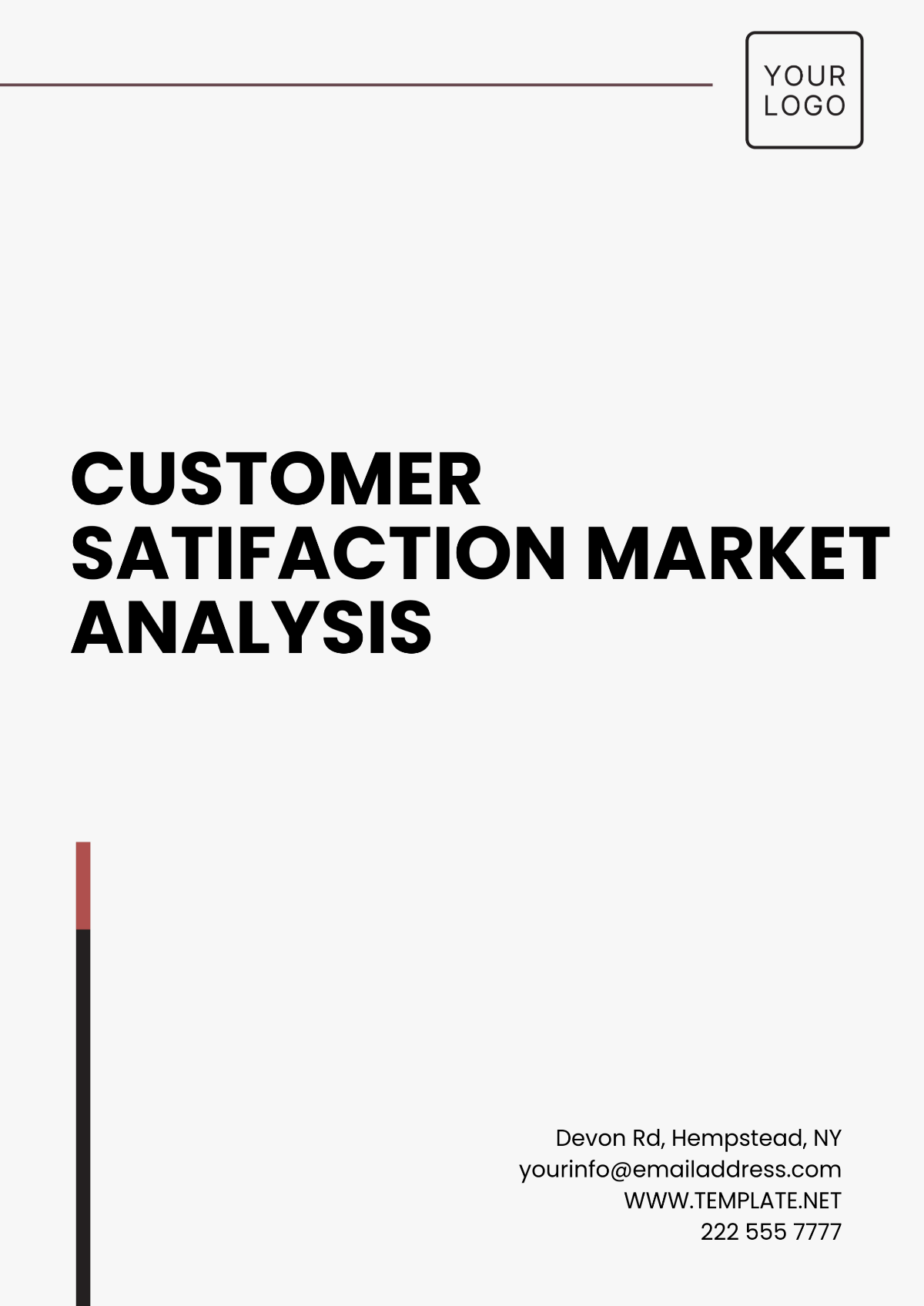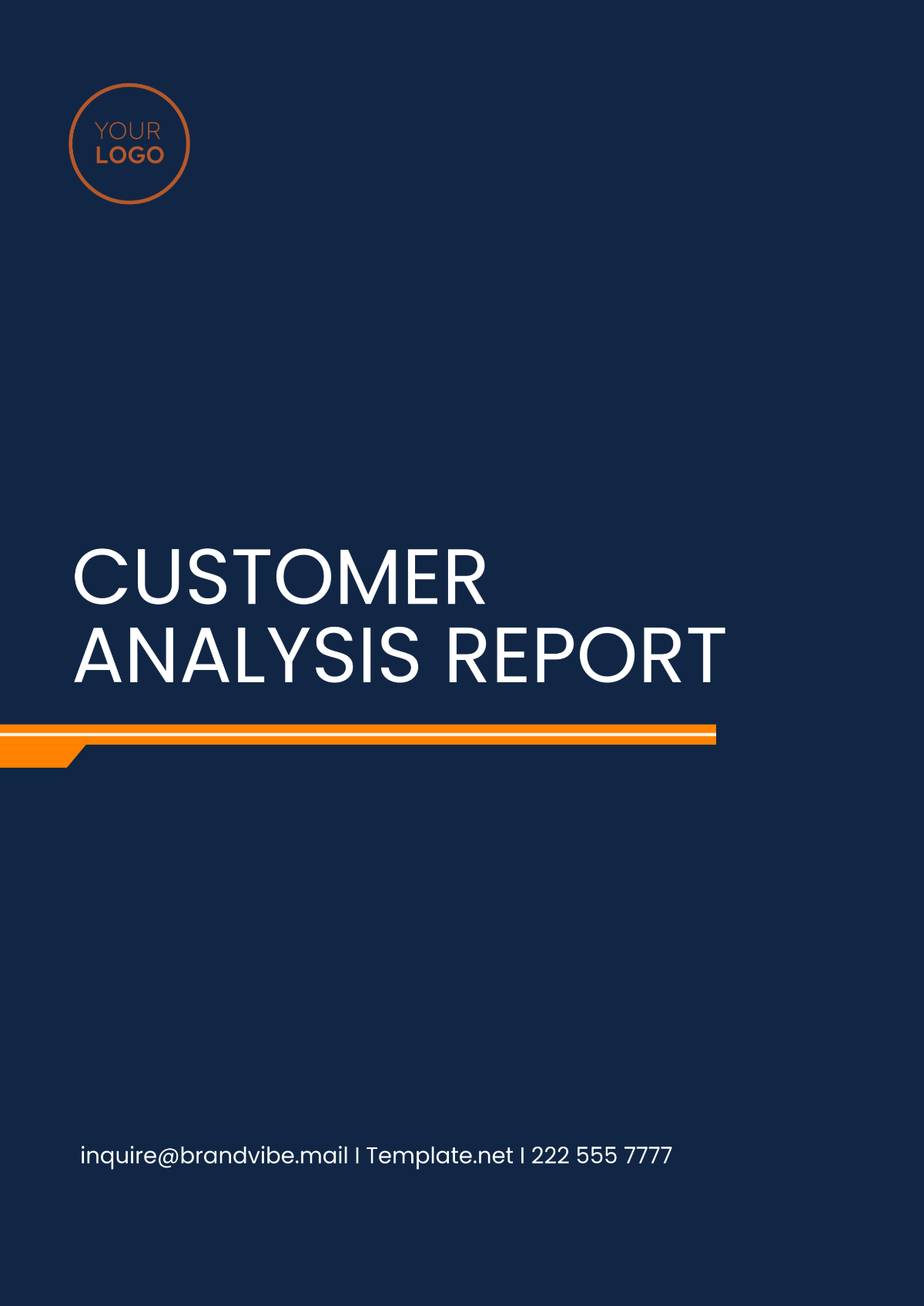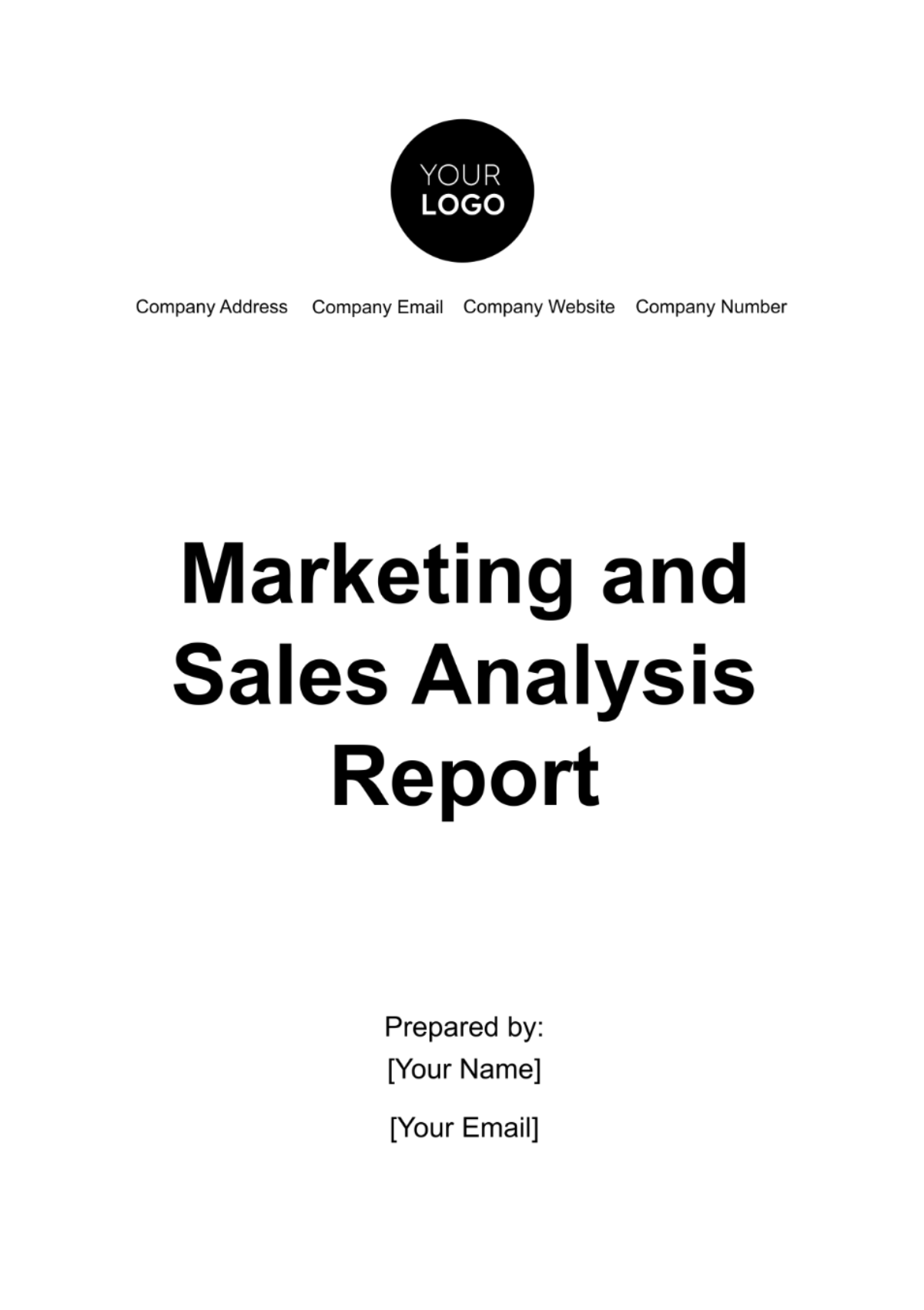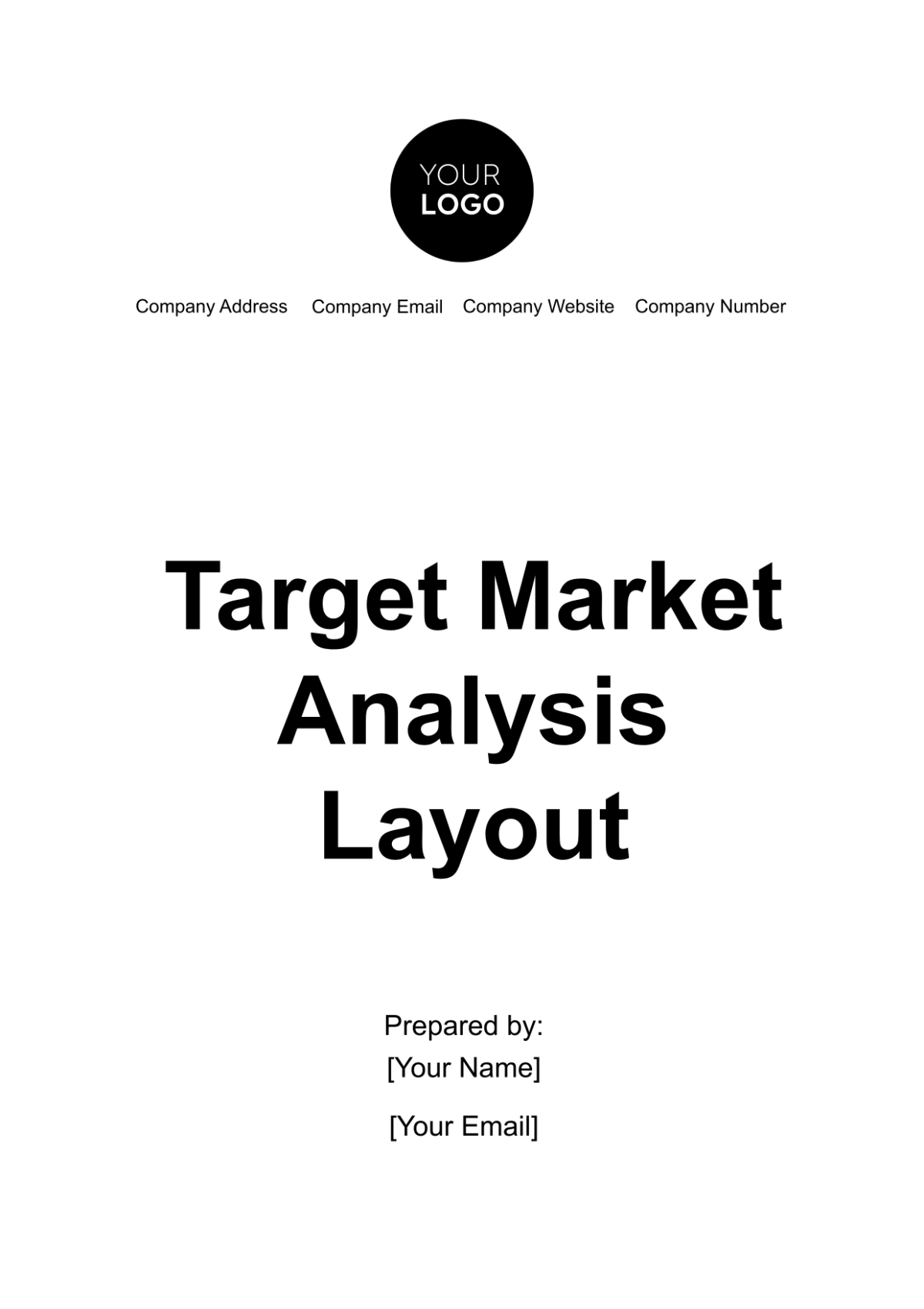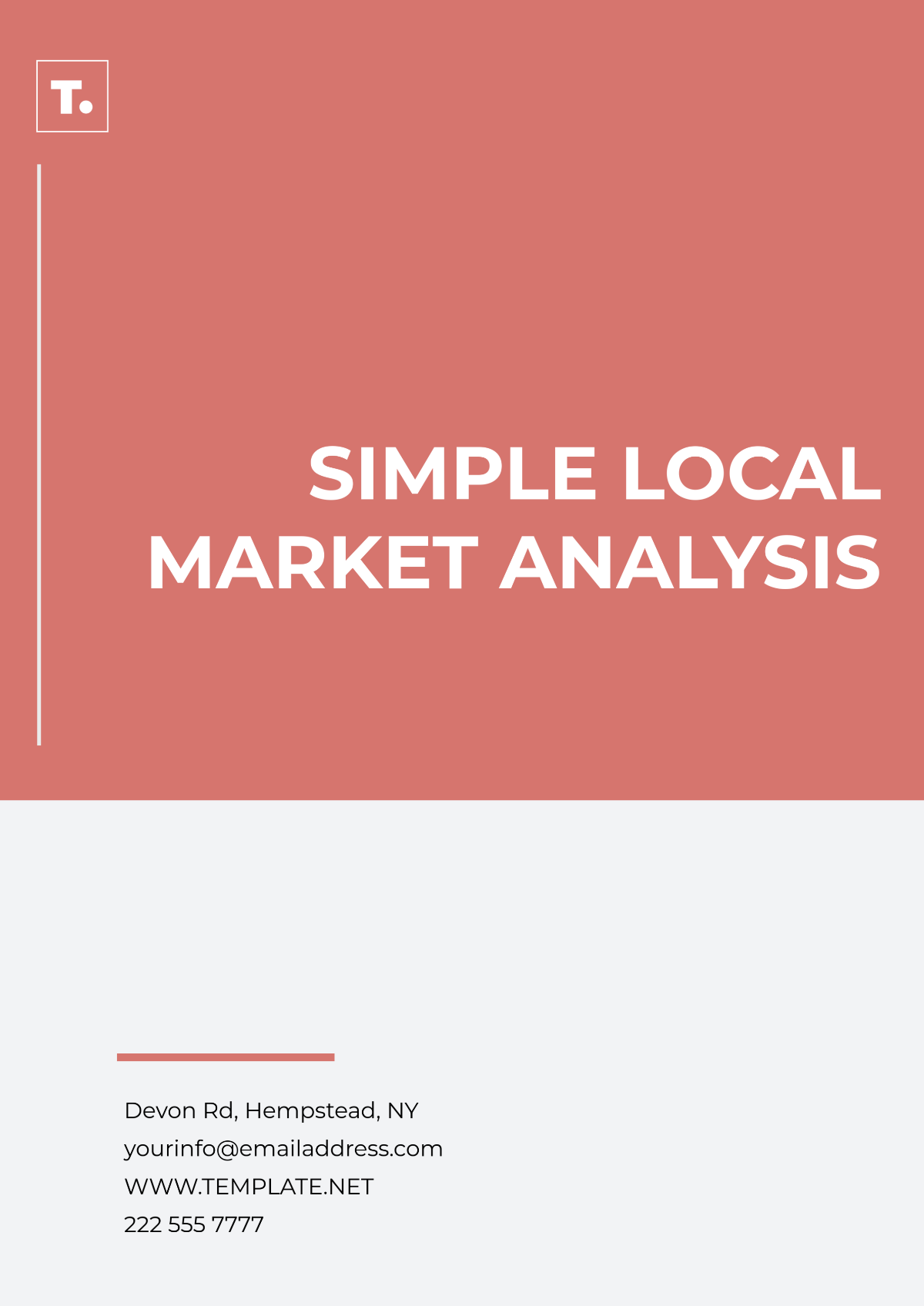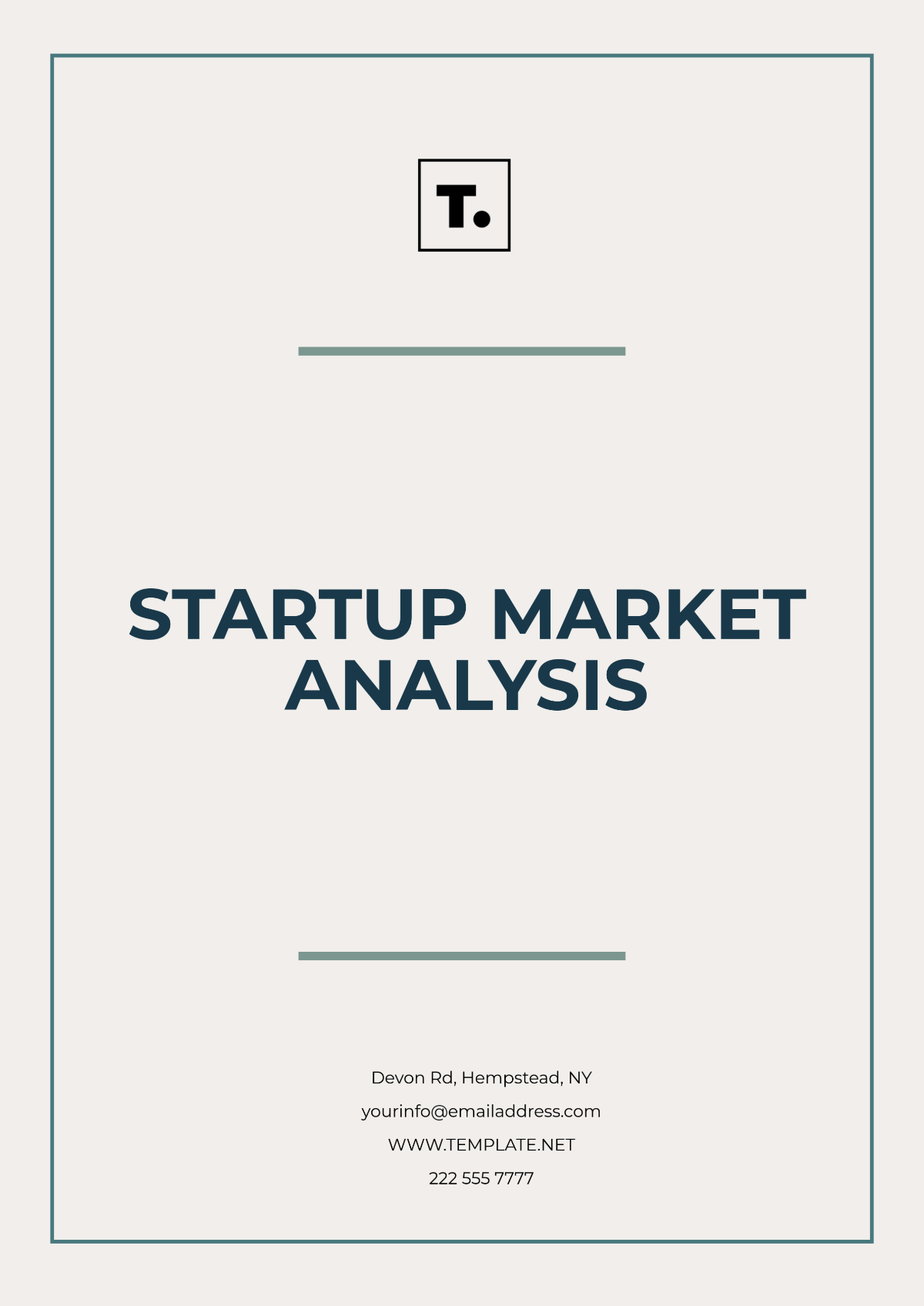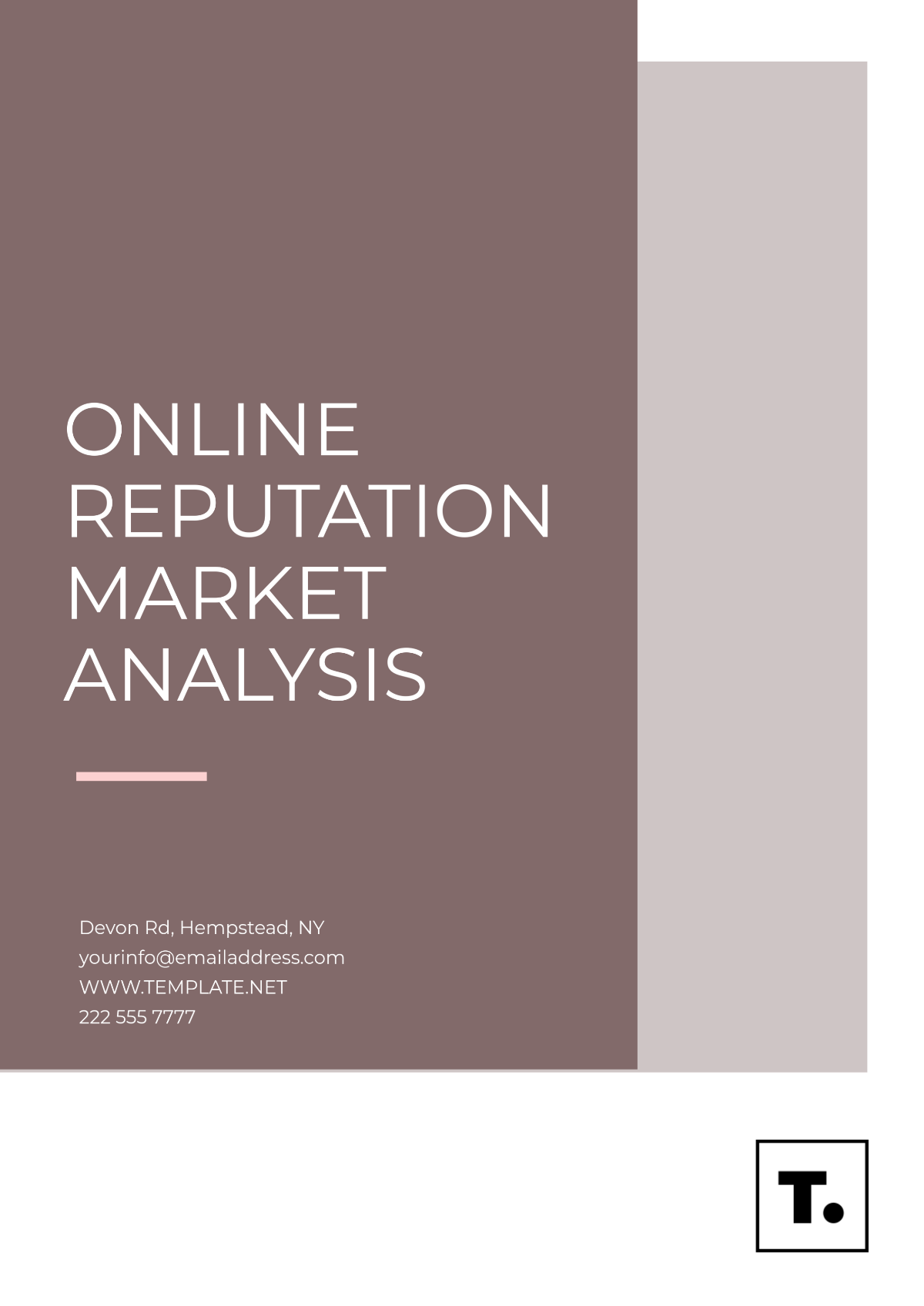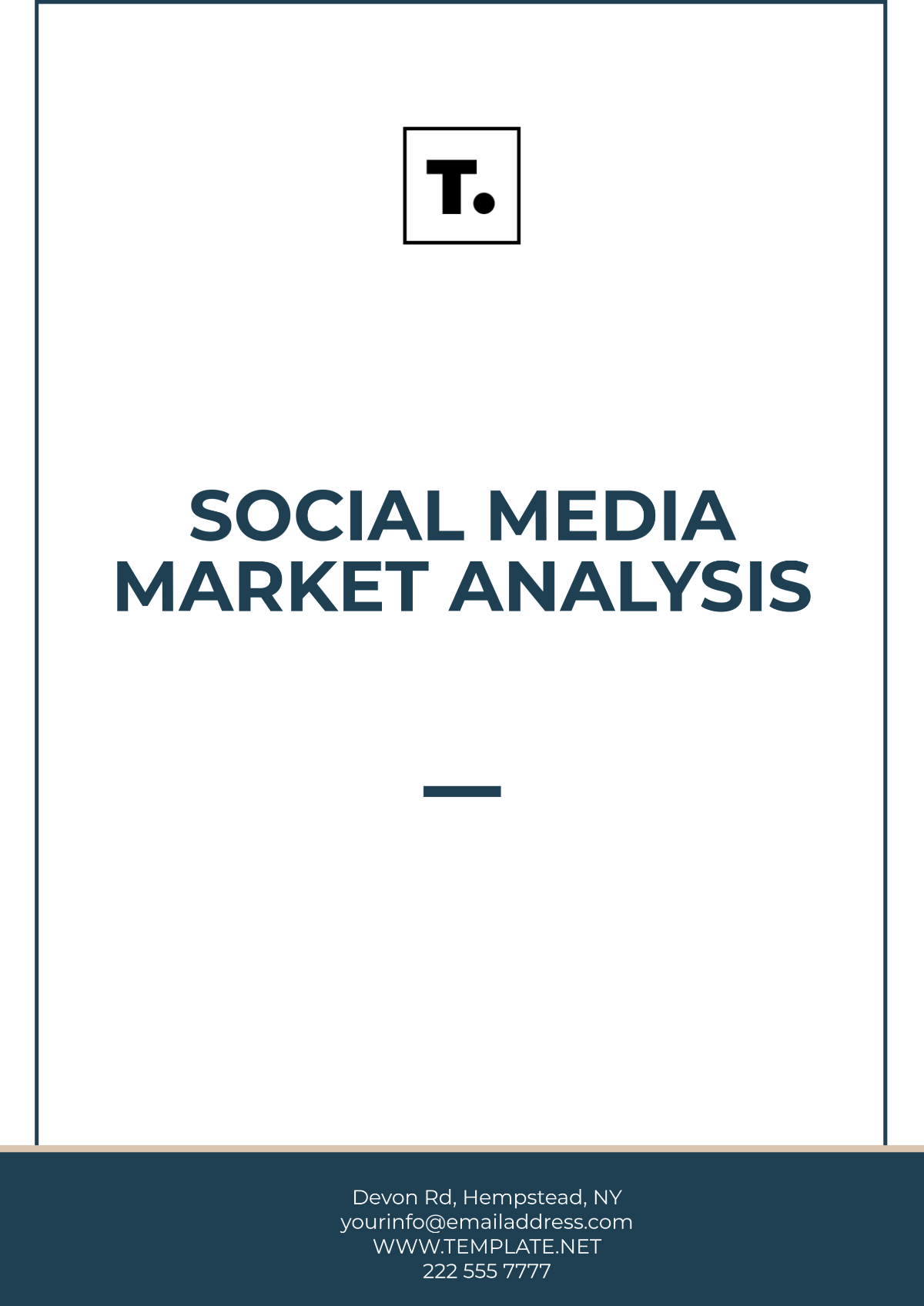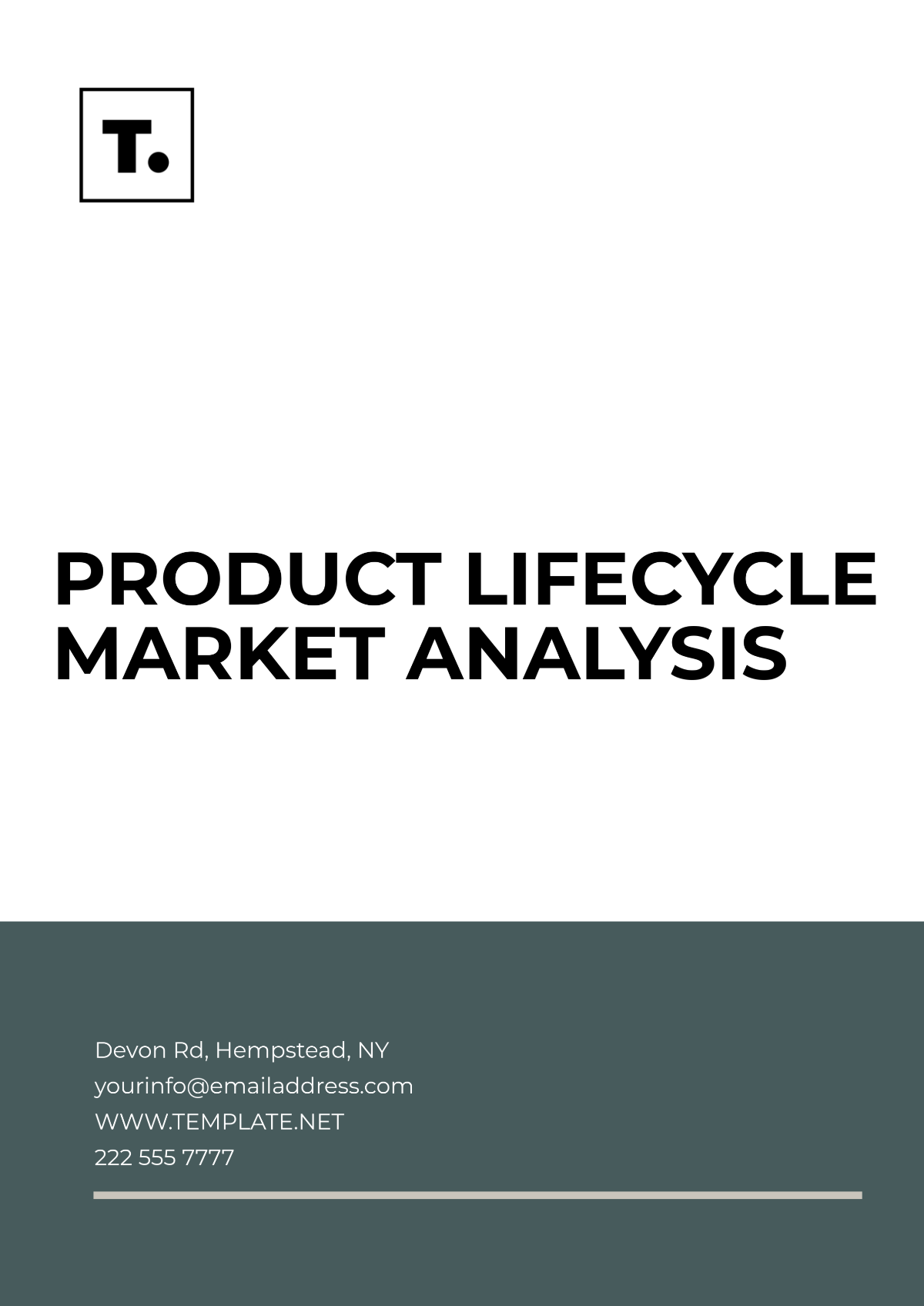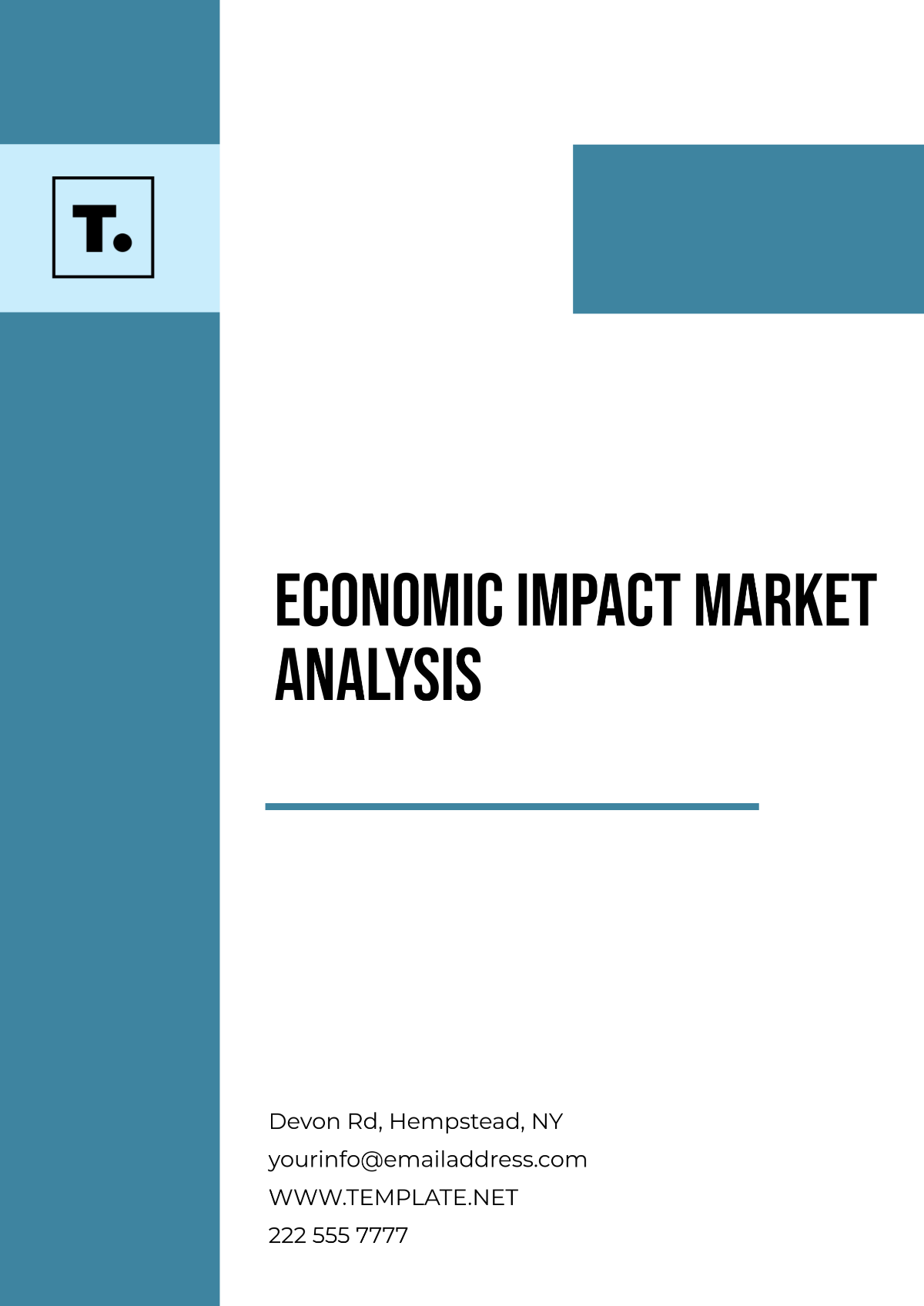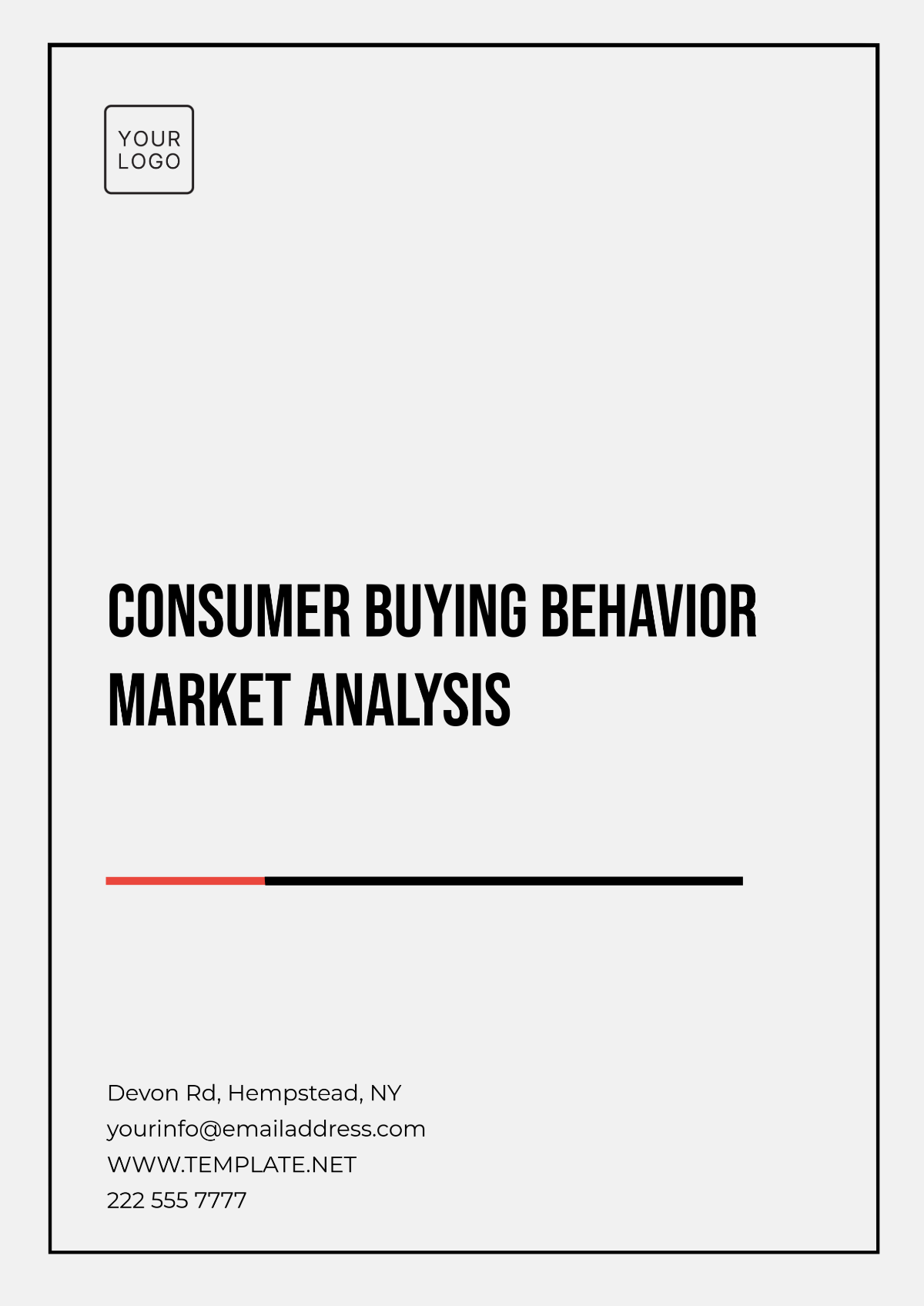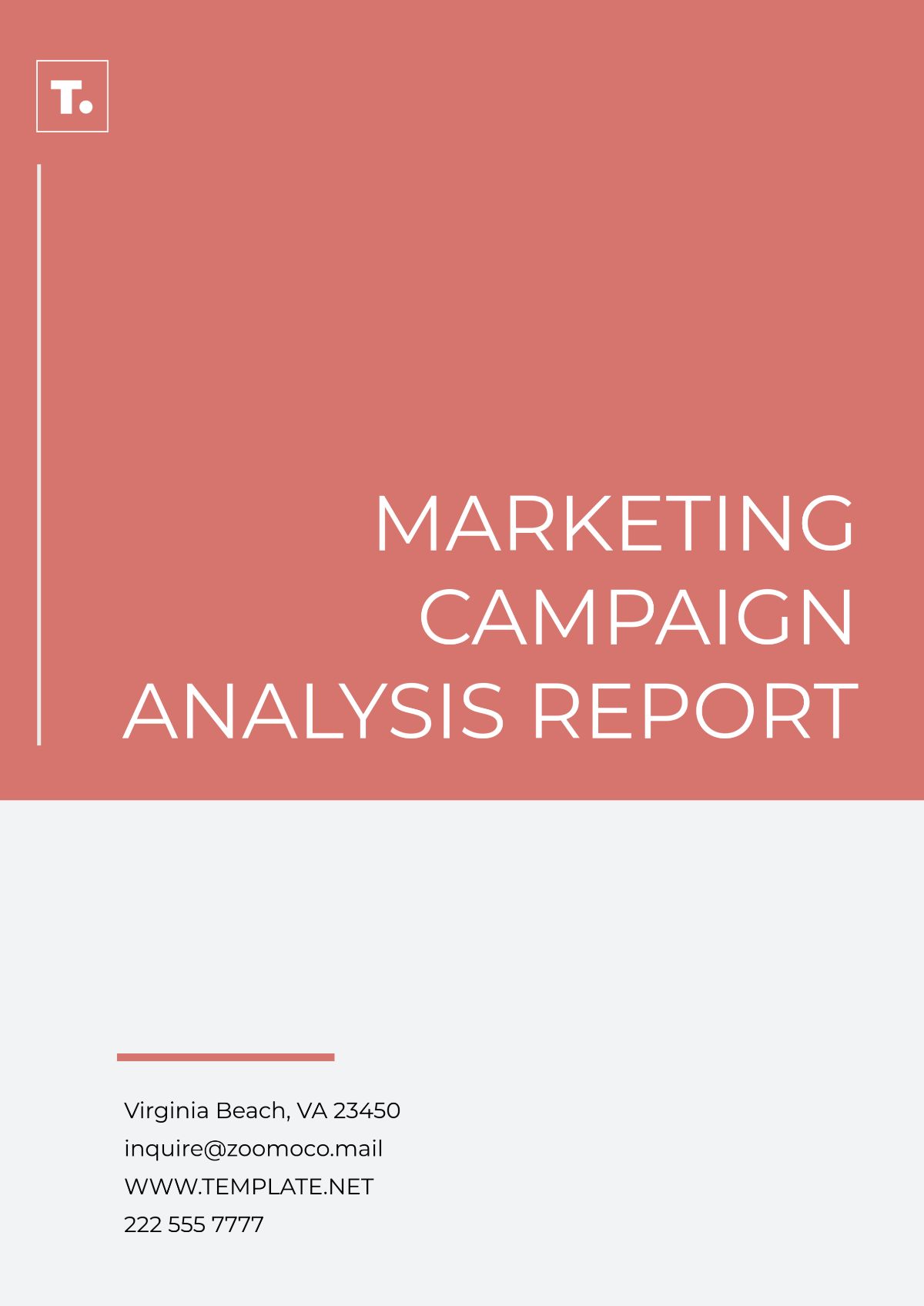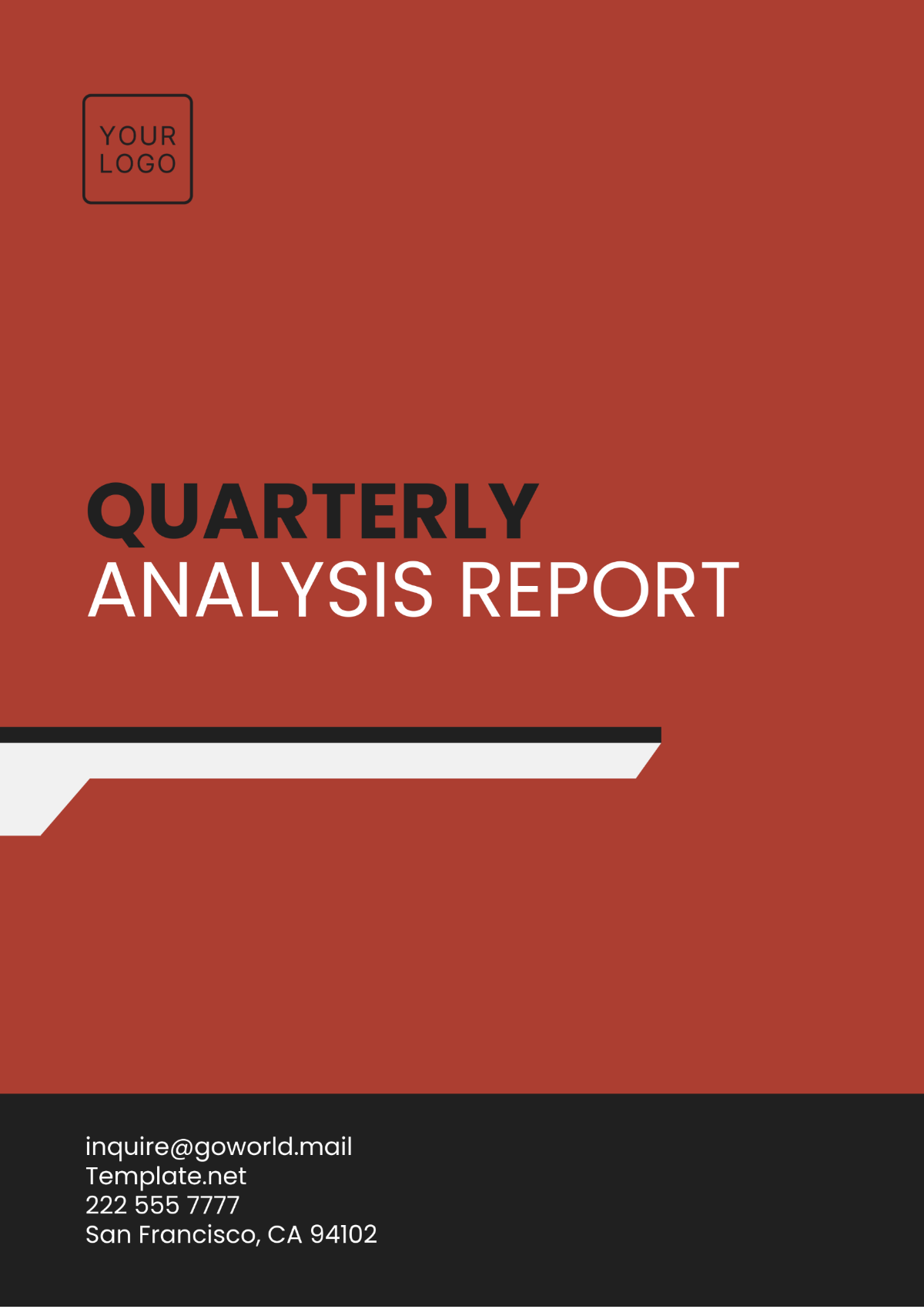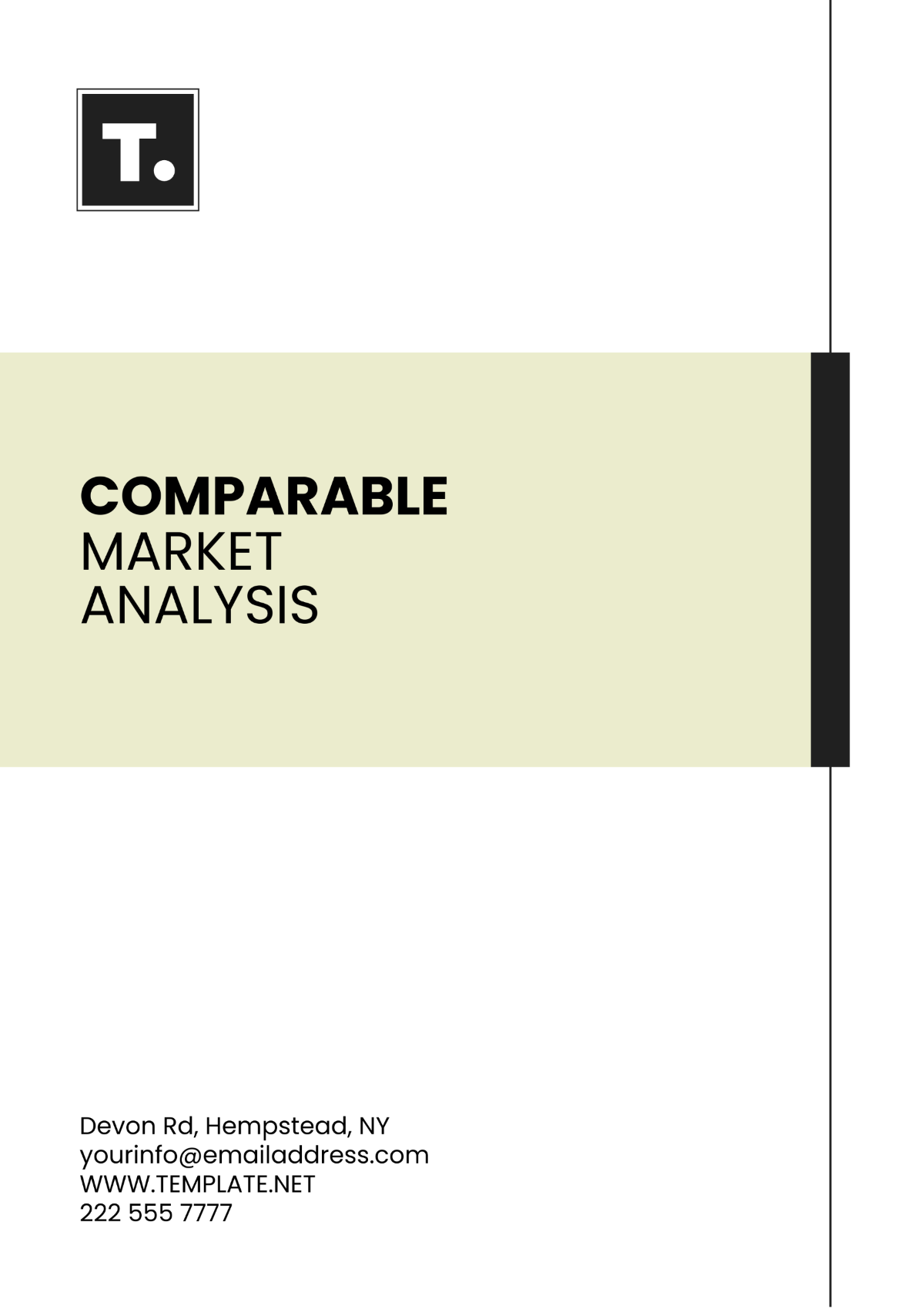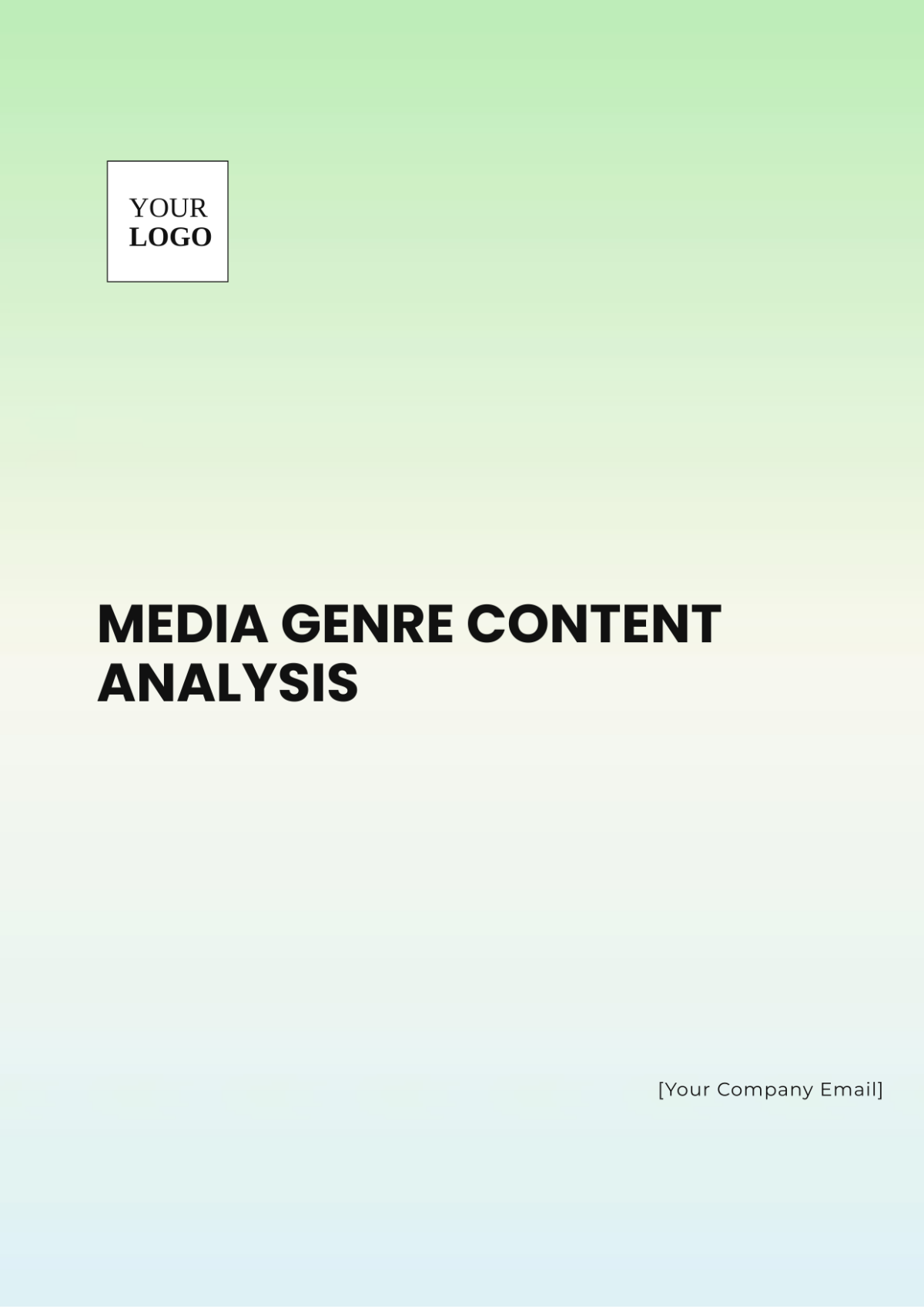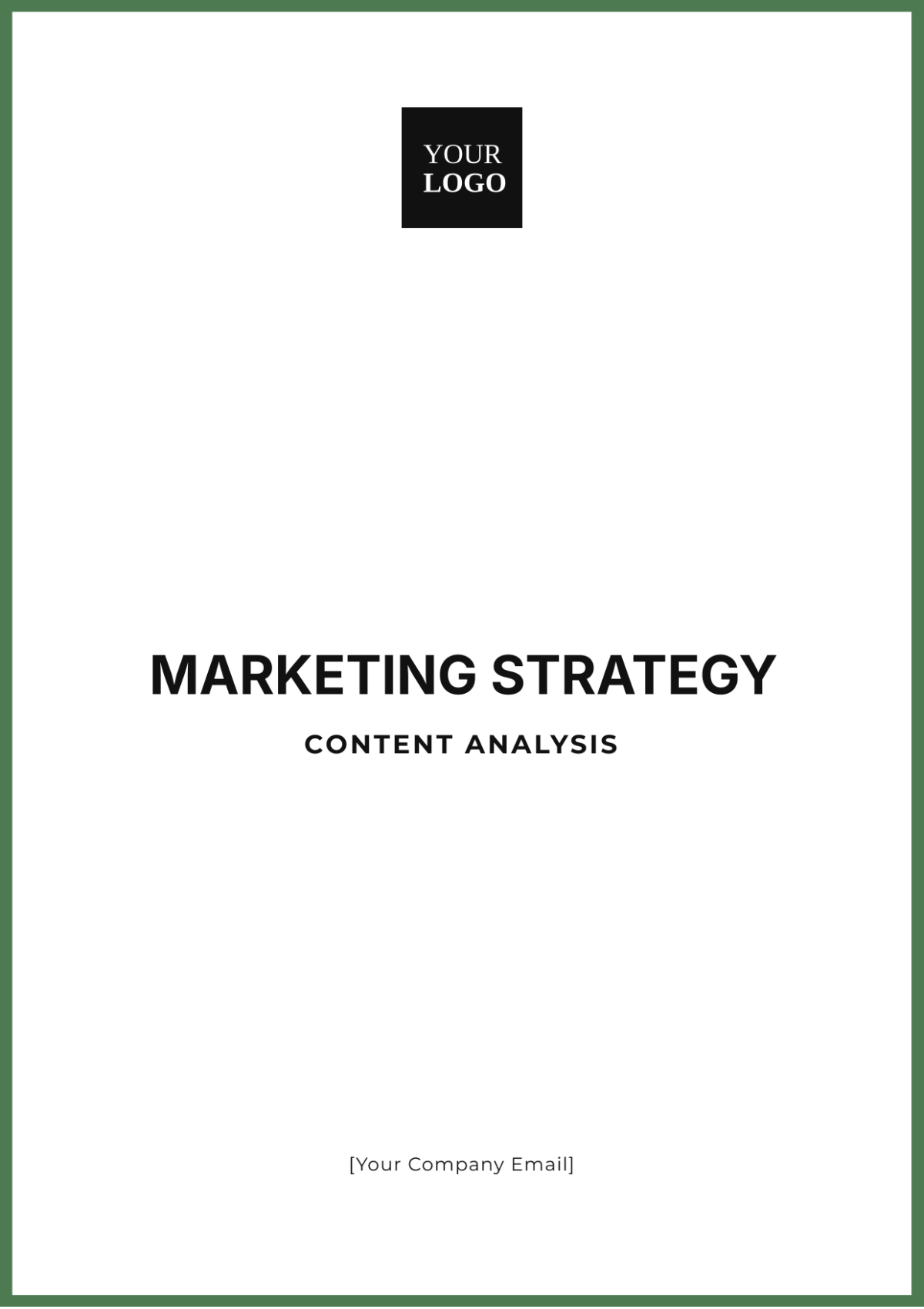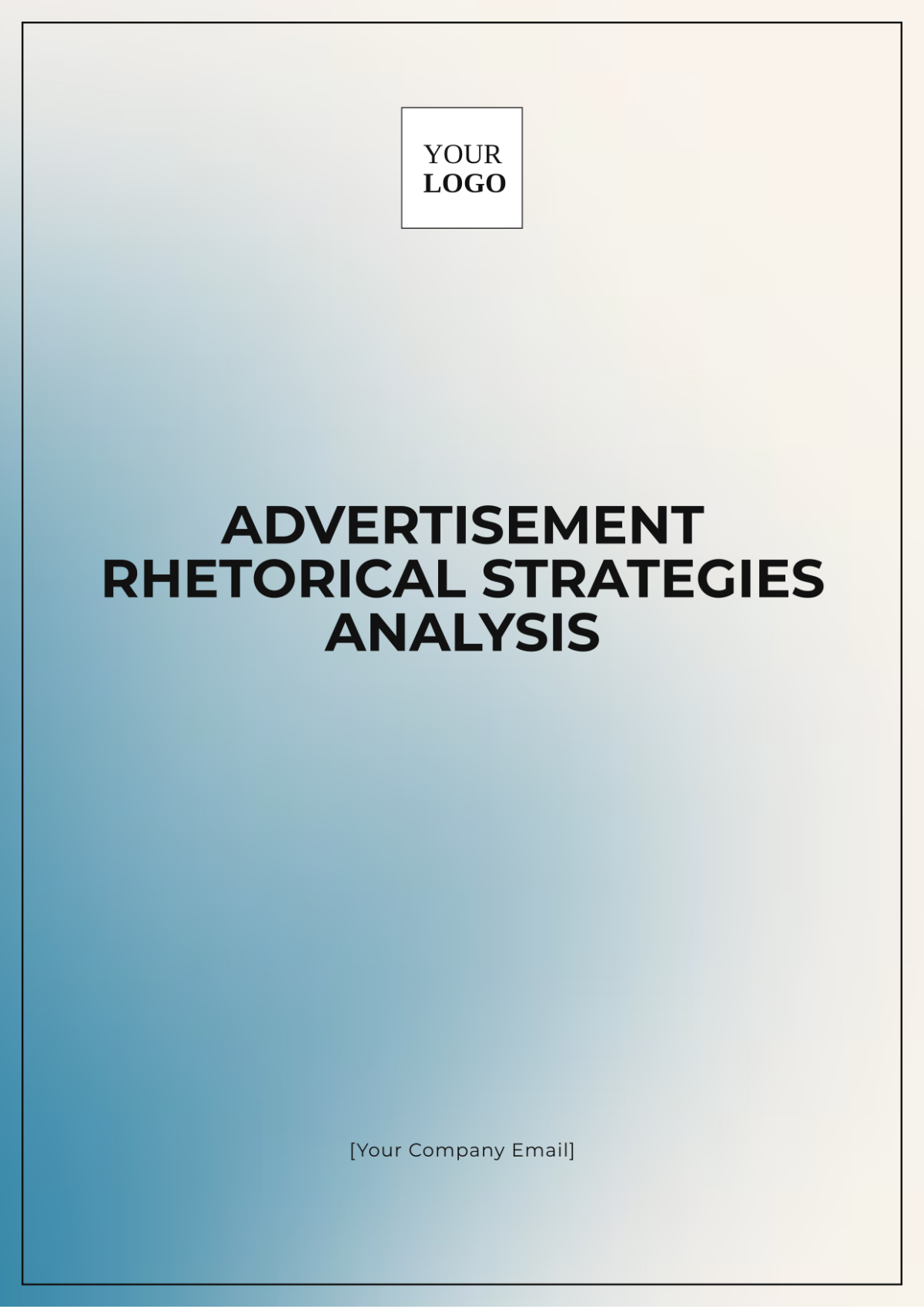Marketing Annual Data Analysis
A MESSAGE FROM OUR STAKEHOLDERS
Our Esteemed Stakeholders,
We are pleased to present to you the "Annual Marketing Data Analysis" report for the year [Year]. This comprehensive document represents a vital component of our ongoing commitment to transparency, data-driven decision-making, and achieving our marketing objectives.
In today's fast-paced business landscape, data plays an indispensable role in shaping strategies, optimizing campaigns, and fostering innovation. At [Your Company Name], we recognize the importance of harnessing the power of data to drive our marketing initiatives and deliver exceptional value to our customers and stakeholders.
This report is a testament to our dedication to excellence. It offers a deep dive into our marketing performance, outlining key insights, trends, challenges, and opportunities that have emerged over the past year. Within these pages, you will find a wealth of information, including:
Performance Metrics: An overview of our marketing key performance indicators (KPIs) and their evolution over time.
Campaign Analysis: A detailed examination of our marketing campaigns, including their impact, reach, and return on investment (ROI).
Market Trends: Insights into the latest industry trends and consumer behaviors that have influenced our marketing strategies.
Challenges and Solutions: Identification of challenges faced and the strategies devised to overcome them.
Future Planning: Our roadmap for the coming year, including proposed projects, initiatives, and enhancements based on the data-driven insights presented in this report.
We invite you to explore this document thoroughly and encourage you to reach out with any questions, insights, or recommendations you may have.
Sincerely,
[Your Name]
[Your Position]
Executive Summary
In the past year, [Your Company Name] has achieved remarkable growth in its marketing endeavors, as indicated by several key performance metrics. We have seen a substantial [00]% increase in website traffic compared to the previous year. This achievement can be attributed to successful search engine optimization (SEO) strategies and content enhancements.
Furthermore, our social media engagement experienced an impressive [00]% growth, thanks to interactive posts and user-generated content campaigns. Email marketing campaigns also yielded excellent results, boasting a [00]% higher open rate due to improved segmentation and personalized content.
Our paid advertising efforts have proven effective, showing a [00]% increase in return on investment (ROI). Remarkably, customer acquisition rates surpassed expectations with a [00]% increase in new customers, while customer retention rates improved, resulting in a [00]% reduction in churn.
Introduction
This annual marketing data analysis aims to comprehensively evaluate the effectiveness of [Your Company Name]'s marketing strategies and initiatives throughout the past year. To achieve this, we collected and processed data from various sources, including Google Analytics, social media platforms, email marketing software, advertising platforms, and our customer relationship management (CRM) system.
Data Collection and Processing
Our data collection process involved the utilization of advanced analytics tools and platforms to gather information concerning website traffic, social media engagement, email marketing performance, paid advertising campaigns, and customer data. To ensure the accuracy of our analysis, rigorous data cleansing and validation procedures were applied.
Customer Satisfaction Analysis
A. Survey Results: Summarize the results of customer satisfaction surveys conducted throughout the year. Include feedback and comments that can provide insights into areas of improvement.
B. Net Promoter Score (NPS): Share the NPS score and trends, highlighting promoters, passives, and detractors, and outline strategies to turn detractors into promoters.
Content Marketing Strategy
A. Content Calendar Review: Analyze the effectiveness of your content calendar, including the timing and relevance of content releases, and suggest adjustments.
B. Keyword Performance: Evaluate the performance of targeted keywords in SEO-optimized content. Recommend adjustments based on keyword rankings.
Social Media Analysis
Platform-Specific Performance: The following figures underscore the importance of platform-specific strategies tailored to our target audiences:
Social Media Platform | Year | Engagement Increase (%) |
[Year] | [00] | |
[Year] | [00] | |
[Year] | [00] |
Hashtag Engagement: Our analysis of hashtag engagement revealed some fascinating insights. This data below underscores the significance of crafting campaign-specific hashtags that resonate with our audience.
Hashtag | Engagement Increase (%) | Click-Through Rate Increase (%) |
#[hashtag] | [00] | [00] |
#[hashtag] | [00] | [00] |
Generic #[hashtag] | [00] | [00] |
Email Marketing Review
Segmentation Effectiveness: Our email marketing efforts underwent significant improvements in list segmentation. The introduction of more precise segmentation strategies led to a [00]% increase in open rates and a [00]% uptick in conversions. By targeting our audience with more tailored content, we achieved remarkable results. Further refinements in this area are expected to drive even better outcomes in the upcoming year.
A/B Testing Results: A/B testing consistently played a pivotal role in enhancing our email marketing. Testing different subject lines, content variations, and calls to action proved to be highly effective. In particular, emails with personalized subject lines saw a [00]% increase in open rates, while those featuring dynamic content witnessed a [00]% boost in click-through rates. These results underscore the importance of continued A/B testing as we strive for further optimization.
Influencer Marketing Impact
Influencer Collaboration: Our influencer marketing campaigns yielded impressive results, with influencer collaborations driving a [00]% increase in reach, a [00]% surge in engagement, and a [00]% rise in conversions. Notably, partnerships with eco-conscious influencers like [Influencer Name] had a significant impact on our sustainability-focused campaigns. Identifying and nurturing such partnerships will remain a key strategy for future campaigns.
Influencer ROI: Calculating the ROI for influencer collaborations revealed promising figures. On average, every dollar invested in influencer marketing generated a return of $[0]. This impressive ROI validates the efficacy of our influencer partnerships. To maximize ROI further, we intend to diversify our influencer portfolio and explore long-term collaborations with influencers who align closely with our brand values.
Customer Journey Mapping
Customer Touch Points: Our customer journey mapping revealed critical touchpoints where our marketing efforts influence decisions and actions. From initial awareness to conversion, we identified that personalized email interactions and engaging social media content played pivotal roles in guiding customers along their journey. By further optimizing these touchpoints, we aim to enhance the overall customer experience.
Conversion Funnel Analysis: Analyzing the conversion funnel, we observed some drop-off points, particularly during the consideration stage. To address this, we plan to implement proactive lead nurturing campaigns and provide more informative content to ease potential customers through the journey. Our goal is to create a seamless path from consideration to conversion.
Market Trends and Competitive Analysis
Emerging Trends: In the ever-evolving landscape of sustainability and eco-friendly products, we've identified several emerging trends. These include a growing consumer preference for eco-certified products, an increased focus on circular economy practices, and a surge in demand for eco-conscious packaging solutions. These trends present opportunities for us to align our marketing strategies with evolving consumer preferences.
Competitor Benchmarking: In our latest competitive analysis, we compared our performance with key competitors. Notably, we outperformed competitors in terms of customer engagement and sustainability messaging. However, there are opportunities to gain a competitive edge by diversifying our content formats and further enhancing our sustainability initiatives.
Budget Allocation and ROI
Our budget allocation saw positive returns across various channels and campaigns. Content marketing garnered the highest ROI, with a remarkable [00]% increase in leads generated per dollar spent. Social media advertising also demonstrated its effectiveness, with a [00]% increase in website traffic. Going forward, we'll continue to allocate resources based on performance, with a focus on high-ROI channels.
Marketing Performance Metrics
Website Traffic and Conversion Rates: Our efforts in improving website traffic paid off. The improvement in the overall conversion rate on the website indicates better engagement and lead generation.
Metric | Increase (%) |
Website Traffic | [00] |
Conversion Rate | [00] |
Social Media Engagement and Reach: Social media engagement saw impressive growth. Our social media reach expanded, reaching a wider audience interested in sustainable products.
Metric | Increase (%) |
Social Media Engagement | [00] |
Social Media Reach | [00] |
Email Marketing Effectiveness: Email open rates increased due to improved segmentation and personalized content. Email click-through rates saw a boost, indicating more engaged subscribers.
Metric | Increase (%) |
Email Open Rates | [00] |
Email Click-Through Rates | [00] |
Paid Advertising Performance: Our paid advertising campaigns achieved a higher ROI, with sustainability-focused campaigns outperforming others. The click-through rates for display ads increased, reflecting improvements in ad creatives.
Metric | Increase (%) |
ROI | [00] |
Display Ad Click-Through Rates | [00] |
Customer Acquisition and Retention: We exceeded our customer acquisition targets with an increase in new customers. Additionally, customer retention rates improved, resulting in a [0]% reduction in churn.
Metric | Increase (%) |
Customer Acquisition | [00] |
Customer Retention | [00] |
Customer Segmentation
Customer segmentation revealed valuable insights into our audience, helping us tailor our marketing efforts more effectively:
Demographics: The majority of our customers fall within the 25-44 age range, with growing interest from the 45-64 demographic.
Geographic: We observed robust growth in urban areas, with increased interest in sustainable products in major cities.
Behavioral: Customers who engage with sustainability-related content are more likely to make repeat purchases.
Competitive Analysis
Key Competitors:
We have competitors in the market that bear significant effect on how our company would take action for growth and success. For data privacy and confidentiality, we have named our competitors as: Competitor A, Competitor B, and Competitor C.
Strengths and Weaknesses:
COMPETITOR | STRENGTHS | WEAKNESS |
Competitor A | Introduced groundbreaking products, capturing considerable attention. | Struggled with attendee engagement and interactive elements. |
Competitor B | Visually striking booth design drew a large and consistent audience | Encountered challenges in post-show follow-up strategies. |
Competitor C | Effectively leveraged social media to promote their booth activities. | Product demonstrations lacked consistency and depth. |
Content Analysis
Content Effectiveness:
Our content marketing initiatives were successful in engaging the audience:
Content Themes: Environmental Conservation Tips, Product Spotlights and Reviews, Eco-Friendly Lifestyle Articles, Sustainability News and Trends, and Customer Stories and Testimonials.
Content Formats: Blog Posts and Articles, Engaging Videos and Animations, Informative Infographics, Thoughtful Podcasts, Interactive Quizzes and Polls.
Content Performance:
The "[Campaign Name]" campaign, focusing on environmental conservation tips, generated a [00]% increase in social media shares.
The "[Campaign Name]" campaign achieved a [00]% increase in sales compared to the previous year.
Marketing Campaign Evaluation
Campaign Highlights:
Our "[Campaign Name]" campaign garnered a [00]% increase in social media shares, highlighting its success in engaging our environmentally-conscious audience.
The "[Campaign Name]" campaign achieved a [00]% increase in sales compared to the previous year.
ROI Analysis:
The "[Campaign Name]" campaign achieved an ROI of [00]%, demonstrating its cost-effectiveness.
The "[Campaign Name]" campaign resulted in an impressive [00]% ROI.
Recommendations
Based on the data analysis, we propose the following recommendations:
Personalization: Utilize data-driven insights to create personalized content and product recommendations. Explore the use of event apps and beacon technology to provide real-time, location-based information and recommendations.
Engagement: Introduce augmented reality (AR) and virtual reality (VR) experiences to engage and educate attendees. Offer a wide range of content formats, from interactive workshops to engaging product demonstrations.
Conclusion
In conclusion, the annual marketing data analysis demonstrates the significant progress made by [Your Company Name] in its marketing efforts. Data-driven decision-making has played a crucial role in achieving positive outcomes, including increased website traffic, social media engagement, and customer acquisition.
By implementing the recommendations outlined in this report, we are well-positioned to further enhance our marketing strategies and drive sustainable growth in the upcoming year.


